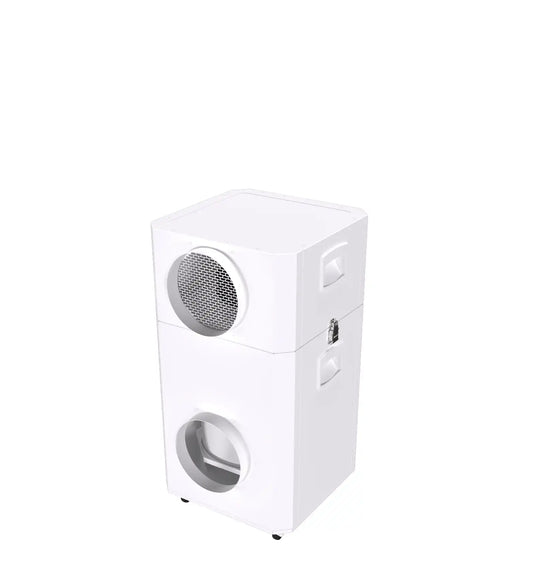How an Air Purifier can reduce allergy symptoms.

Allergies Acting Up? Here’s How an Air Purifier Can Be Your Best Friend
Is there anything more frustrating than a runny nose that just won't quit? If you’re dealing with itchy eyes, sneezing fits, or that general "heavy" feeling in your chest, you definitely aren't alone. As the seasons change, more and more Australians are finding themselves battling hay fever and allergy symptoms.
It can feel like an endless cycle, right? You go outside and get bombarded by pollen, then you come inside hoping for relief, only to find you're still sneezing.
While we can’t vacuum the sky or control the pollen count outdoors, there is a simple way to take control of the air inside your home. Enter the humble air purifier.
Why Your Home Might Be Triggering Your Allergies
Did you know that nearly 20% of Australians suffer from some form of allergic disease? It's a huge number, and it’s only going up. Experts are even warning us to brace for tougher hay fever seasons as spring brings higher pollen counts.
But here is the tricky part: your home might be harbouring the very things making you sick. Common indoor triggers include:
- Mould Spores: Thriving in damp corners.
- Dust Mites: Hiding in your bedding and carpets.
- Pet Dander: Flaking off our furry best friends.
- Pollen: Drifting in through open windows or hitching a ride on your clothes.
How an Air Purifier Helps You Breathe Easier
This is where a high-quality air purifier becomes a game-changer. By cycling the air in your room through a filtration system, it physically traps these airborne agitators before you can breathe them in.
However, not all machines are created equal. To see a real difference in your symptoms, you need an air purifier equipped with a medical-grade HEPA filter.
The "Medical-Grade" Difference
You might see many brands claiming to use HEPA filters, but you have to be careful. Many off-the-shelf models use synthetic materials that aren't true medical-grade. Worse yet, some low-quality plastics can actually release harmful chemicals into your air over time—the exact opposite of what you want!
A genuine medical-grade HEPA filter is designed to capture the tiniest of particles—the invisible allergens that generic filters miss. This can result in almost immediate relief when you walk through your front door.
It’s Not Just About Pollen
If you’re sensitive to dust and pollen, there is a good chance you are also sensitive to other environmental toxins. Do you live near a busy road? Vehicle exhaust and Volatile Organic Compounds (VOCs) from building materials can sneak into your home and irritate your lungs.
This is why we recommend an air purifier that goes beyond just particle filtration. Our systems include high-capacity activated carbon filters. Imagine kilograms of tightly packed carbon acting like a sponge, soaking up chemical vapours and odours.
The result? Air that doesn't just look clean, but actually is clean.
Ready to Clear the Air?
Investing in the right air purifier is one of the best things you can do for your health and comfort this allergy season. Don't let hay fever dictate your life—turn your home into the safe haven it’s supposed to be.
Not sure which model fits your home? Check out our comparison chart to find the perfect system for your needs: Choosing Your System














